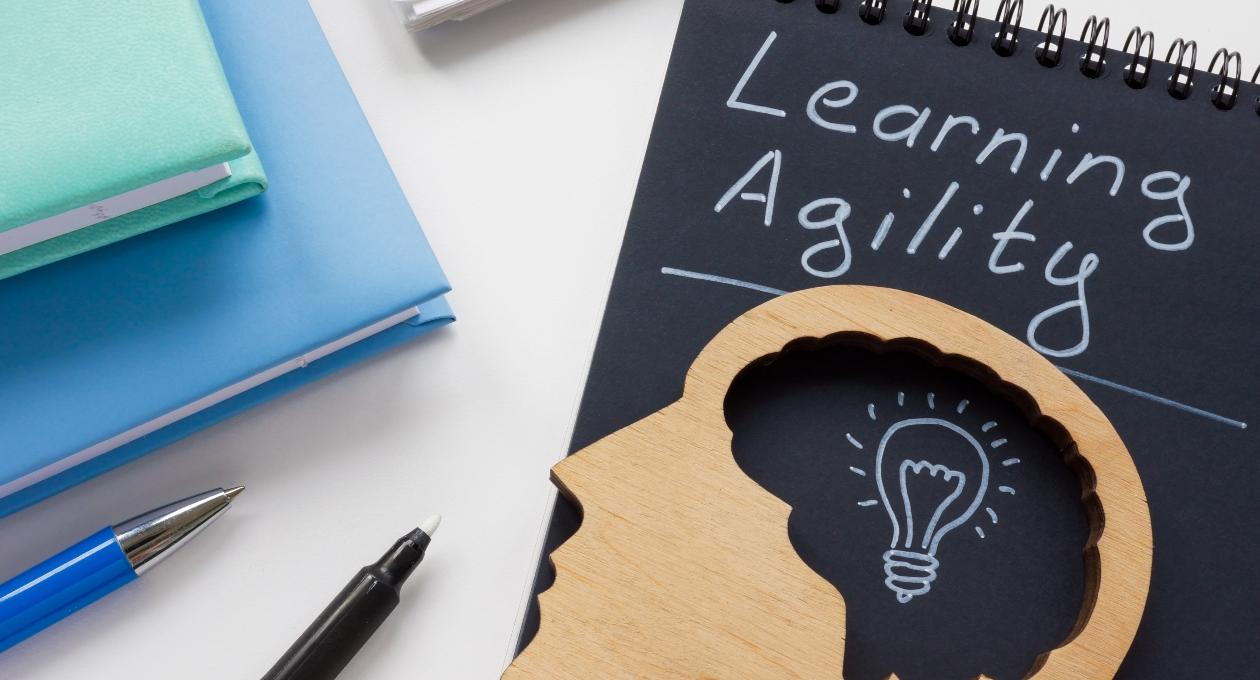Learning agility refers to a person’s ability to quickly learn, adapt, and apply new skills in varying situations. As Forbes puts it, learning agility is “knowing what to do when you don’t know what to do”. In a working world with a skills shortage problem - 54% of SMEs in the EU reported difficulties in finding people with the right skills - learning agility is becoming even more important in helping organizations rapidly navigate complex problems and adapt to change.
The five areas of learning agility
Global consulting firm Korn Ferry has identified five areas of learning agility. They examined managers and leaders to understand each of these areas, and how they interact with learning agile leaders.
The five areas are:
- Mental agility: the capacity to think critically and creatively, solve complex problems, and innovate as a result
- People agility: the skill to communicate effectively, work well with others, and build relationships. Individuals with people agility are generally emotionally intelligent.
- Change agility: the ability to embrace and drive change, seeing challenges as opportunities for growth
- Results agility: the drive to deliver results in new or challenging situations, demonstrating resilience and resourcefulness
- Self-awareness agility: the ability to understand one’s strengths, weaknesses, and the impact of these on others.
Assessing learning agility in individuals
There are several ways we can assess how learning agile the people in our organization - and job applicants - are.
Behavioral interviews
In-person interviews or written assessments reveal learning agility through exploring past experiences, challenges overcome and how, and examples of rapid learning or adaptation. The answers to these questions and posed scenarios create a well-rounded picture of a person’s ability in each of the five areas of learning agility.
360-degree feedback
360-degree feedback, collating feedback from managers, colleagues, team members, and even clients or customers, is a really useful tool for evaluating learning agility. The combination of perspectives offers the potential for insight into each of the five areas of learning agility, particularly people agility and self-awareness agility.
Psychometric assessments
These assessments, backed by people science and data, are designed to evaluate all of the components of learning agility. They assess different aspects of an individual and their approach to work, from their aptitude for different types of tasks, their emotional intelligence, and their engagement levels, providing a balanced summary of their abilities and traits.
Developing learning agility in your team
It’s possible to improve learning agility within teams to improve performance. It’s all about having a growth mindset, showing team members that learning from mistakes is valuable and that challenges are to be viewed as opportunities rather than feared.
To enhance learning agility, leaders should provide opportunities for team members to learn and apply new skills. Taking people out of their comfort zones is key here. Cross-functional projects are ideal environments for people to learn more about their company and pick up new skills while demonstrating their own to others who can learn from them too. Mentoring and training programs can be implemented to help individuals improve specific components of learning agility, such as management training to improve people's agility.
As much as assessments and feedback help team leaders understand the learning capabilities within their team, it’s also important to encourage regular self-reflection. Regular review sessions, where individuals self-evaluate before a discussion with their manager, are a good way of encouraging this. These meetings also offer a window for constructive feedback and time to advocate for continuous improvement.
The role of learning agility in leadership development
Learning agility is sought after at a leadership level - companies with ‘highly agile executives’ have 25% higher profit margins than their peers (Korn Ferry, 2014). Learning agility on the leadership team keeps companies going and growing through challenges while keeping employees engaged.
Assessing our workforce for learning agility also helps identify potential leaders of the future. This prevents us from being left with gaps at the top and gives us confidence that we have in our power the potential to keep moving forward even if there is a change in the organization. Assessing learning agility helps us find those who are capable of navigating change and driving innovation, and when we know who these learning agile people are, we can tailor leadership training for them so they're ready to step up when the time comes.
Leadership training for learning agile candidates isn’t just about securing the future of the organization, about knowing who will take on the title. It’s about enhancing the learning agile traits they already possess, preparing them to tackle the challenges of tomorrow.
Leveraging Thomas’ expertise
Thomas’ comprehensive platform, offering psychometric assessments and other resources, has been specifically designed to measure and develop learning agility among employees and leaders. It can support HR teams in interviewing candidates understanding their abilities and learning agility potential, setting your organization up for success with each new hire.
Our experts can help you understand the results of your learning agility assessments and help create customized development plans based on these results to strengthen any areas of weakness in a person’s learning agility. These development plans can aid team members and mold your future leaders for growth, innovation, and success.
The future of work and learning agility
Understanding learning agility and how learning agile your workforce is critical for success in a rapidly evolving workplace. Organizations that have assessed and hired for learning agility have a competitive edge; they’re ready and willing to take on new challenges and succeed.
When it comes to future-proofing learning agility, both individuals and organizations need to be committed to ongoing learning and evaluations. It’s vital to continue assessing learning agility at regular intervals to ensure that training has been effective and that people are progressing with their new skills. Potential leaders and actual leaders must continue to adapt and lean on their various areas of agility to ensure long-term growth.
Thomas International can help your organization prioritize this critical skill. With our tools, training, and resources, you can develop learning agility throughout your company and gain valuable insights about what the future of your workforce looks like.
Speak to one of our team today to embrace the transformative power of learning agility and give your company the tools to face change head-on and innovate harder.




